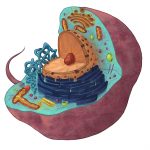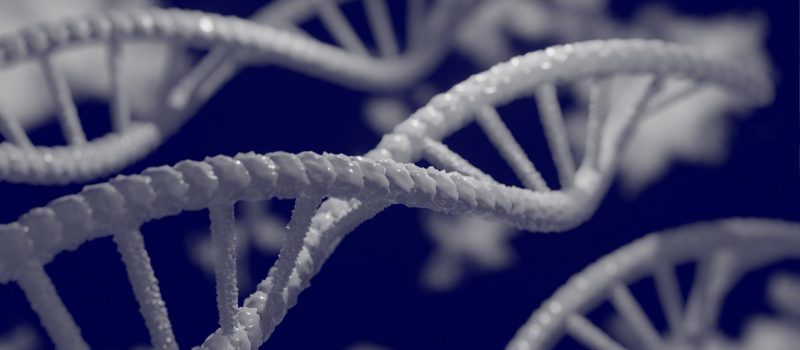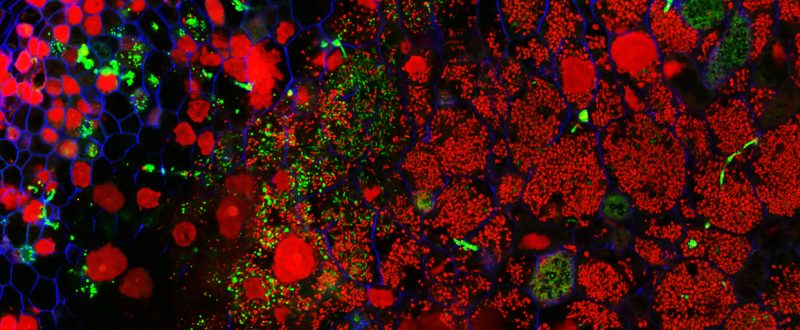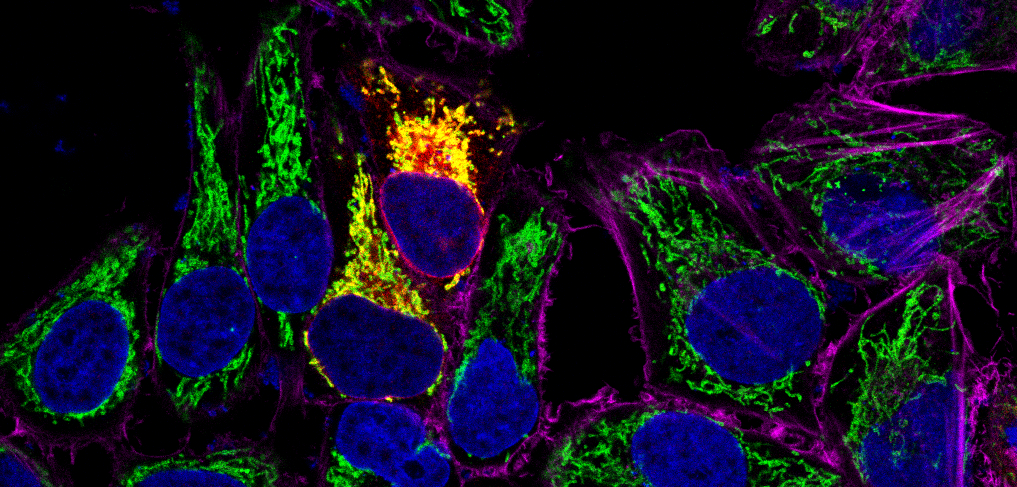I2BC publishes 200-250
articles and reviews a year
Institute for Integrative Biology of the Cell
Publications
Publications / year
0
different journals
0
fields
0
Publications / year
0
different journals
0
fields
0
![]() Latest Publications
Latest Publications
3888256
i2bc
1
chicago-author-date
10
date
desc
year
4613
https://www.i2bc.paris-saclay.fr/wp-content/plugins/zotpress/
%7B%22status%22%3A%22success%22%2C%22updateneeded%22%3Afalse%2C%22instance%22%3Afalse%2C%22meta%22%3A%7B%22request_last%22%3A0%2C%22request_next%22%3A0%2C%22used_cache%22%3Atrue%7D%2C%22data%22%3A%5B%7B%22key%22%3A%22ETW55ERX%22%2C%22library%22%3A%7B%22id%22%3A3888256%7D%2C%22meta%22%3A%7B%22creatorSummary%22%3A%22M%5Cu00fcnz%20et%20al.%22%2C%22parsedDate%22%3A%222025-12-31%22%2C%22numChildren%22%3A1%7D%2C%22bib%22%3A%22%3Cdiv%20class%3D%5C%22csl-bib-body%5C%22%20style%3D%5C%22line-height%3A%201.35%3B%20padding-left%3A%201em%3B%20text-indent%3A-1em%3B%5C%22%3E%5Cn%20%20%3Cdiv%20class%3D%5C%22csl-entry%5C%22%3EM%26%23xFC%3Bnz%2C%20Christian%2C%20Grant%20R.%20Campbell%2C%20Audrey%20Esclatine%2C%20Mathias%20Faure%2C%20Patrick%20Labonte%2C%20Marion%20Lussignol%2C%20Anthony%20Orvedahl%2C%20et%20al.%202025.%20%26%23x201C%3BAutophagy%20Machinery%20as%20Exploited%20by%20Viruses.%26%23x201D%3B%20%3Ci%3EAutophagy%20Reports%3C%5C%2Fi%3E%204%20%281%29%3A%2027694127.2025.2464986.%20%3Ca%20class%3D%27zp-DOIURL%27%20href%3D%27https%3A%5C%2F%5C%2Fdoi.org%5C%2F10.1080%5C%2F27694127.2025.2464986%27%3Ehttps%3A%5C%2F%5C%2Fdoi.org%5C%2F10.1080%5C%2F27694127.2025.2464986%3C%5C%2Fa%3E.%3C%5C%2Fdiv%3E%5Cn%3C%5C%2Fdiv%3E%22%2C%22data%22%3A%7B%22itemType%22%3A%22journalArticle%22%2C%22title%22%3A%22Autophagy%20machinery%20as%20exploited%20by%20viruses%22%2C%22creators%22%3A%5B%7B%22creatorType%22%3A%22author%22%2C%22firstName%22%3A%22Christian%22%2C%22lastName%22%3A%22M%5Cu00fcnz%22%7D%2C%7B%22creatorType%22%3A%22author%22%2C%22firstName%22%3A%22Grant%20R.%22%2C%22lastName%22%3A%22Campbell%22%7D%2C%7B%22creatorType%22%3A%22author%22%2C%22firstName%22%3A%22Audrey%22%2C%22lastName%22%3A%22Esclatine%22%7D%2C%7B%22creatorType%22%3A%22author%22%2C%22firstName%22%3A%22Mathias%22%2C%22lastName%22%3A%22Faure%22%7D%2C%7B%22creatorType%22%3A%22author%22%2C%22firstName%22%3A%22Patrick%22%2C%22lastName%22%3A%22Labonte%22%7D%2C%7B%22creatorType%22%3A%22author%22%2C%22firstName%22%3A%22Marion%22%2C%22lastName%22%3A%22Lussignol%22%7D%2C%7B%22creatorType%22%3A%22author%22%2C%22firstName%22%3A%22Anthony%22%2C%22lastName%22%3A%22Orvedahl%22%7D%2C%7B%22creatorType%22%3A%22author%22%2C%22firstName%22%3A%22Nihal%22%2C%22lastName%22%3A%22Altan-Bonnet%22%7D%2C%7B%22creatorType%22%3A%22author%22%2C%22firstName%22%3A%22Ralf%22%2C%22lastName%22%3A%22Bartenschlager%22%7D%2C%7B%22creatorType%22%3A%22author%22%2C%22firstName%22%3A%22Rupert%22%2C%22lastName%22%3A%22Beale%22%7D%2C%7B%22creatorType%22%3A%22author%22%2C%22firstName%22%3A%22Mara%22%2C%22lastName%22%3A%22Cirone%22%7D%2C%7B%22creatorType%22%3A%22author%22%2C%22firstName%22%3A%22Lucile%22%2C%22lastName%22%3A%22Espert%22%7D%2C%7B%22creatorType%22%3A%22author%22%2C%22firstName%22%3A%22Jae%22%2C%22lastName%22%3A%22Jung%22%7D%2C%7B%22creatorType%22%3A%22author%22%2C%22firstName%22%3A%22David%22%2C%22lastName%22%3A%22Leib%22%7D%2C%7B%22creatorType%22%3A%22author%22%2C%22firstName%22%3A%22Fulvio%22%2C%22lastName%22%3A%22Reggiori%22%7D%2C%7B%22creatorType%22%3A%22author%22%2C%22firstName%22%3A%22Sumana%22%2C%22lastName%22%3A%22Sanyal%22%7D%2C%7B%22creatorType%22%3A%22author%22%2C%22firstName%22%3A%22Stephen%20A.%22%2C%22lastName%22%3A%22Spector%22%7D%2C%7B%22creatorType%22%3A%22author%22%2C%22firstName%22%3A%22Volker%22%2C%22lastName%22%3A%22Thiel%22%7D%2C%7B%22creatorType%22%3A%22author%22%2C%22firstName%22%3A%22Christophe%22%2C%22lastName%22%3A%22Viret%22%7D%2C%7B%22creatorType%22%3A%22author%22%2C%22firstName%22%3A%22Yu%22%2C%22lastName%22%3A%22Wei%22%7D%2C%7B%22creatorType%22%3A%22author%22%2C%22firstName%22%3A%22Thomas%22%2C%22lastName%22%3A%22Wileman%22%7D%2C%7B%22creatorType%22%3A%22author%22%2C%22firstName%22%3A%22Harald%22%2C%22lastName%22%3A%22Wodrich%22%7D%5D%2C%22abstractNote%22%3A%22Viruses%20adapt%20and%20modulate%20cellular%20pathways%20to%20allow%20their%20replication%20in%20host%20cells.%20The%20catabolic%20pathway%20of%20macroautophagy%2C%20for%20simplicity%20referred%20to%20as%20autophagy%2C%20is%20no%20exception.%20In%20this%20review%2C%20we%20discuss%20anti-viral%20functions%20of%20both%20autophagy%20and%20select%20components%20of%20the%20autophagy%20machinery%2C%20and%20how%20viruses%20have%20evaded%20them.%20Some%20viruses%20use%20the%20membrane%20remodeling%20ability%20of%20the%20autophagy%20machinery%20to%20build%20their%20replication%20compartments%20in%20the%20cytosol%20or%20efficiently%20egress%20from%20cells%20in%20a%20non-lytic%20fashion.%20Some%20of%20the%20autophagy%20machinery%20components%20and%20their%20remodeled%20membranes%20can%20even%20be%20found%20in%20viral%20particles%20as%20envelopes%20or%20single%20membranes%20around%20virus%20packages%20that%20protect%20them%20during%20spreading%20and%20transmission.%20Therefore%2C%20studies%20on%20autophagy%20regulation%20by%20viral%20infections%20can%20reveal%20functions%20of%20the%20autophagy%20machinery%20beyond%20lysosomal%20degradation%20of%20cytosolic%20constituents.%20Furthermore%2C%20they%20can%20also%20pinpoint%20molecular%20interactions%20with%20which%20the%20autophagy%20machinery%20can%20most%20efficiently%20be%20manipulated%2C%20and%20this%20may%20be%20relevant%20to%20develop%20effective%20disease%20treatments%20based%20on%20autophagy%20modulation.%22%2C%22date%22%3A%222025-12-31%22%2C%22language%22%3A%22eng%22%2C%22DOI%22%3A%2210.1080%5C%2F27694127.2025.2464986%22%2C%22ISSN%22%3A%222769-4127%22%2C%22url%22%3A%22%22%2C%22collections%22%3A%5B%5D%2C%22dateModified%22%3A%222025-04-10T05%3A37%3A15Z%22%7D%7D%2C%7B%22key%22%3A%22TREG7D2H%22%2C%22library%22%3A%7B%22id%22%3A3888256%7D%2C%22meta%22%3A%7B%22creatorSummary%22%3A%22Meza-Torres%20et%20al.%22%2C%22parsedDate%22%3A%222025-12%22%2C%22numChildren%22%3A1%7D%2C%22bib%22%3A%22%3Cdiv%20class%3D%5C%22csl-bib-body%5C%22%20style%3D%5C%22line-height%3A%201.35%3B%20padding-left%3A%201em%3B%20text-indent%3A-1em%3B%5C%22%3E%5Cn%20%20%3Cdiv%20class%3D%5C%22csl-entry%5C%22%3EMeza-Torres%2C%20Jazmin%2C%20Jean-Yves%20Tinevez%2C%20Aline%20Crouzols%2C%20H%26%23xE9%3Blo%26%23xEF%3Bse%20Mary%2C%20Minhee%20Kim%2C%20Lise%20Hunault%2C%20Susan%20Chamorro-Rodriguez%2C%20et%20al.%202025.%20%26%23x201C%3BClostridioides%20Difficile%20Binary%20Toxin%20CDT%20Induces%20Biofilm-like%20Persisting%20Microcolonies.%26%23x201D%3B%20%3Ci%3EGut%20Microbes%3C%5C%2Fi%3E%2017%20%281%29%3A%202444411.%20%3Ca%20class%3D%27zp-DOIURL%27%20href%3D%27https%3A%5C%2F%5C%2Fdoi.org%5C%2F10.1080%5C%2F19490976.2024.2444411%27%3Ehttps%3A%5C%2F%5C%2Fdoi.org%5C%2F10.1080%5C%2F19490976.2024.2444411%3C%5C%2Fa%3E.%3C%5C%2Fdiv%3E%5Cn%3C%5C%2Fdiv%3E%22%2C%22data%22%3A%7B%22itemType%22%3A%22journalArticle%22%2C%22title%22%3A%22Clostridioides%20difficile%20binary%20toxin%20CDT%20induces%20biofilm-like%20persisting%20microcolonies%22%2C%22creators%22%3A%5B%7B%22creatorType%22%3A%22author%22%2C%22firstName%22%3A%22Jazmin%22%2C%22lastName%22%3A%22Meza-Torres%22%7D%2C%7B%22creatorType%22%3A%22author%22%2C%22firstName%22%3A%22Jean-Yves%22%2C%22lastName%22%3A%22Tinevez%22%7D%2C%7B%22creatorType%22%3A%22author%22%2C%22firstName%22%3A%22Aline%22%2C%22lastName%22%3A%22Crouzols%22%7D%2C%7B%22creatorType%22%3A%22author%22%2C%22firstName%22%3A%22H%5Cu00e9lo%5Cu00efse%22%2C%22lastName%22%3A%22Mary%22%7D%2C%7B%22creatorType%22%3A%22author%22%2C%22firstName%22%3A%22Minhee%22%2C%22lastName%22%3A%22Kim%22%7D%2C%7B%22creatorType%22%3A%22author%22%2C%22firstName%22%3A%22Lise%22%2C%22lastName%22%3A%22Hunault%22%7D%2C%7B%22creatorType%22%3A%22author%22%2C%22firstName%22%3A%22Susan%22%2C%22lastName%22%3A%22Chamorro-Rodriguez%22%7D%2C%7B%22creatorType%22%3A%22author%22%2C%22firstName%22%3A%22Emilie%22%2C%22lastName%22%3A%22Lejal%22%7D%2C%7B%22creatorType%22%3A%22author%22%2C%22firstName%22%3A%22Pamela%22%2C%22lastName%22%3A%22Altamirano-Silva%22%7D%2C%7B%22creatorType%22%3A%22author%22%2C%22firstName%22%3A%22D%5Cu00e9borah%22%2C%22lastName%22%3A%22Groussard%22%7D%2C%7B%22creatorType%22%3A%22author%22%2C%22firstName%22%3A%22Samy%22%2C%22lastName%22%3A%22Gobaa%22%7D%2C%7B%22creatorType%22%3A%22author%22%2C%22firstName%22%3A%22Johann%22%2C%22lastName%22%3A%22Peltier%22%7D%2C%7B%22creatorType%22%3A%22author%22%2C%22firstName%22%3A%22Benoit%22%2C%22lastName%22%3A%22Chassaing%22%7D%2C%7B%22creatorType%22%3A%22author%22%2C%22firstName%22%3A%22Bruno%22%2C%22lastName%22%3A%22Dupuy%22%7D%5D%2C%22abstractNote%22%3A%22Clinical%20symptoms%20of%20Clostridioides%20difficile%20infection%20%28CDI%29%20range%20from%20diarrhea%20to%20pseudomembranous%20colitis.%20A%20major%20challenge%20in%20managing%20CDI%20is%20the%20high%20rate%20of%20relapse.%20Several%20studies%20correlate%20the%20production%20of%20CDT%20binary%20toxin%20by%20clinical%20strains%20of%20C.%20difficile%20with%20higher%20relapse%20rates.%20Although%20the%20mechanism%20of%20action%20of%20CDT%20on%20host%20cells%20is%20known%2C%20its%20exact%20contribution%20to%20CDI%20is%20still%20unclear.%20To%20understand%20the%20physiological%20role%20of%20CDT%20during%20CDI%2C%20we%20established%20two%20hypoxic%20relevant%20intestinal%20models%2C%20Transwell%20and%20Microfluidic%20Intestine-on-Chip%20systems.%20Both%20were%20challenged%20with%20the%20epidemic%20strain%20UK1%20CDT%2B%20and%20its%20isogenic%20CDT-%20mutant.%20We%20report%20that%20CDT%20induces%20mucin-associated%20microcolonies%20that%20increase%20C.%20difficile%20colonization%20and%20display%20biofilm-like%20properties%20by%20enhancing%20C.%20difficile%20resistance%20to%20vancomycin.%20Importantly%2C%20biofilm-like%20microcolonies%20were%20also%20observed%20in%20the%20cecum%20and%20colon%20of%20infected%20mice.%20Hence%2C%20our%20study%20shows%20that%20CDT%20induces%20biofilm-like%20microcolonies%2C%20increasing%20C.%20difficile%20persistence%20and%20risk%20of%20relapse.%22%2C%22date%22%3A%222025-12%22%2C%22language%22%3A%22eng%22%2C%22DOI%22%3A%2210.1080%5C%2F19490976.2024.2444411%22%2C%22ISSN%22%3A%221949-0984%22%2C%22url%22%3A%22%22%2C%22collections%22%3A%5B%5D%2C%22dateModified%22%3A%222025-01-07T09%3A54%3A07Z%22%7D%7D%2C%7B%22key%22%3A%226474GMBL%22%2C%22library%22%3A%7B%22id%22%3A3888256%7D%2C%22meta%22%3A%7B%22creatorSummary%22%3A%22Fu%20et%20al.%22%2C%22parsedDate%22%3A%222025-06-26%22%2C%22numChildren%22%3A1%7D%2C%22bib%22%3A%22%3Cdiv%20class%3D%5C%22csl-bib-body%5C%22%20style%3D%5C%22line-height%3A%201.35%3B%20padding-left%3A%201em%3B%20text-indent%3A-1em%3B%5C%22%3E%5Cn%20%20%3Cdiv%20class%3D%5C%22csl-entry%5C%22%3EFu%2C%20Rebecca%2C%20Paula%20Jordan%2C%20Zoe%20Engels%2C%20Jasmin%20Alara%20Weihs%2C%20Josias%20M%26%23xFC%3Brle%2C%20Huanting%20Chi%2C%20Sebastian%20Burbano%20de%20Lara%2C%20et%20al.%202025.%20%26%23x201C%3BIntegrin%20Beta%201%20Facilitates%20Non-Enveloped%20Hepatitis%20E%20Virus%20Cell%20Entry%20through%20the%20Recycling%20Endosome.%26%23x201D%3B%20%3Ci%3ENature%20Communications%3C%5C%2Fi%3E%2016%20%281%29%3A%205403.%20%3Ca%20class%3D%27zp-DOIURL%27%20href%3D%27https%3A%5C%2F%5C%2Fdoi.org%5C%2F10.1038%5C%2Fs41467-025-61071-y%27%3Ehttps%3A%5C%2F%5C%2Fdoi.org%5C%2F10.1038%5C%2Fs41467-025-61071-y%3C%5C%2Fa%3E.%3C%5C%2Fdiv%3E%5Cn%3C%5C%2Fdiv%3E%22%2C%22data%22%3A%7B%22itemType%22%3A%22journalArticle%22%2C%22title%22%3A%22Integrin%20beta%201%20facilitates%20non-enveloped%20hepatitis%20E%20virus%20cell%20entry%20through%20the%20recycling%20endosome%22%2C%22creators%22%3A%5B%7B%22creatorType%22%3A%22author%22%2C%22firstName%22%3A%22Rebecca%22%2C%22lastName%22%3A%22Fu%22%7D%2C%7B%22creatorType%22%3A%22author%22%2C%22firstName%22%3A%22Paula%22%2C%22lastName%22%3A%22Jordan%22%7D%2C%7B%22creatorType%22%3A%22author%22%2C%22firstName%22%3A%22Zoe%22%2C%22lastName%22%3A%22Engels%22%7D%2C%7B%22creatorType%22%3A%22author%22%2C%22firstName%22%3A%22Jasmin%20Alara%22%2C%22lastName%22%3A%22Weihs%22%7D%2C%7B%22creatorType%22%3A%22author%22%2C%22firstName%22%3A%22Josias%22%2C%22lastName%22%3A%22M%5Cu00fcrle%22%7D%2C%7B%22creatorType%22%3A%22author%22%2C%22firstName%22%3A%22Huanting%22%2C%22lastName%22%3A%22Chi%22%7D%2C%7B%22creatorType%22%3A%22author%22%2C%22firstName%22%3A%22Sebastian%22%2C%22lastName%22%3A%22Burbano%20de%20Lara%22%7D%2C%7B%22creatorType%22%3A%22author%22%2C%22firstName%22%3A%22Barbara%22%2C%22lastName%22%3A%22Helm%22%7D%2C%7B%22creatorType%22%3A%22author%22%2C%22firstName%22%3A%22Mara%22%2C%22lastName%22%3A%22Kl%5Cu00f6hn%22%7D%2C%7B%22creatorType%22%3A%22author%22%2C%22firstName%22%3A%22Jungen%22%2C%22lastName%22%3A%22Hu%22%7D%2C%7B%22creatorType%22%3A%22author%22%2C%22firstName%22%3A%22Andrew%22%2C%22lastName%22%3A%22Freistaedter%22%7D%2C%7B%22creatorType%22%3A%22author%22%2C%22firstName%22%3A%22Tobias%22%2C%22lastName%22%3A%22Boettler%22%7D%2C%7B%22creatorType%22%3A%22author%22%2C%22firstName%22%3A%22Marco%22%2C%22lastName%22%3A%22Binder%22%7D%2C%7B%22creatorType%22%3A%22author%22%2C%22firstName%22%3A%22Ursula%22%2C%22lastName%22%3A%22Klingm%5Cu00fcller%22%7D%2C%7B%22creatorType%22%3A%22author%22%2C%22firstName%22%3A%22Eike%22%2C%22lastName%22%3A%22Steinmann%22%7D%2C%7B%22creatorType%22%3A%22author%22%2C%22firstName%22%3A%22Pierre-Yves%22%2C%22lastName%22%3A%22Lozach%22%7D%2C%7B%22creatorType%22%3A%22author%22%2C%22firstName%22%3A%22Thibault%22%2C%22lastName%22%3A%22Tubiana%22%7D%2C%7B%22creatorType%22%3A%22author%22%2C%22firstName%22%3A%22Stanley%20M.%22%2C%22lastName%22%3A%22Lemon%22%7D%2C%7B%22creatorType%22%3A%22author%22%2C%22firstName%22%3A%22Viet%20Loan%22%2C%22lastName%22%3A%22Dao%20Thi%22%7D%5D%2C%22abstractNote%22%3A%22Hepatitis%20E%20virus%20%28HEV%29%20is%20a%20major%20cause%20of%20acute%20hepatitis%20and%20mainly%20transmitted%20faecal-orally.%20HEV%20particles%20present%20in%20faeces%20are%20naked%20%28nHEV%29%2C%20whereas%20those%20found%20in%20the%20blood%20are%20quasi-enveloped%20%28eHEV%29%20with%20a%20cell-derived%20lipid%20membrane.%20Despite%20its%20global%20health%20impact%2C%20the%20cellular%20life%20cycle%20of%20HEV%20remains%20poorly%20understood%2C%20particularly%20regarding%20the%20mechanisms%20of%20viral%20entry%20into%20host%20cells.%20To%20address%20this%20knowledge%20gap%2C%20we%20develop%20a%20high%20content%20RNA-FISH-based%20imaging%20assay%20that%20allows%20for%20the%20investigation%20of%20the%20entry%20pathways%20of%20both%20naked%20and%20quasi-enveloped%20HEV%20particles.%20Surprisingly%2C%20we%20find%20that%20integrin%20%5Cu03b13%2C%20previously%20implicated%20in%20nHEV%20cell%20entry%2C%20is%20not%20expressed%20in%20the%20cell%20types%20that%20are%20most%20permissive%20for%20HEV%20infection.%20Instead%2C%20we%20identify%20integrin%20%5Cu03b21%20%28ITGB1%29%20pairing%20with%20different%20%5Cu03b1-integrins%20as%20the%20key%20player%20mediating%20nHEV%20cell%20entry.%20Our%20results%20indicate%20that%20the%20interaction%20of%20nHEV%20with%20ITGB1%20facilitates%20entry%20through%20Rab11-positive%20recycling%20endosomes.%20In%20contrast%2C%20eHEV%20particles%20do%20not%20interact%20with%20ITGB1%20and%20enter%20cells%20using%20a%20classical%20endocytic%20route%20via%20Rab5a-positive%20early%20endosomes.%20The%20entry%20of%20both%20types%20of%20HEV%20particles%20requires%20endosomal%20acidification%20and%20proteolytic%20cleavage%20by%20lysosomal%20cathepsins%2C%20which%20ultimately%20results%20in%20delivery%20of%20the%20HEV%20genome%20to%20the%20cytoplasm.%22%2C%22date%22%3A%222025-06-26%22%2C%22language%22%3A%22eng%22%2C%22DOI%22%3A%2210.1038%5C%2Fs41467-025-61071-y%22%2C%22ISSN%22%3A%222041-1723%22%2C%22url%22%3A%22%22%2C%22collections%22%3A%5B%5D%2C%22dateModified%22%3A%222025-06-27T10%3A13%3A08Z%22%7D%7D%2C%7B%22key%22%3A%22J3CUSFSU%22%2C%22library%22%3A%7B%22id%22%3A3888256%7D%2C%22meta%22%3A%7B%22creatorSummary%22%3A%22Armengaud%20et%20al.%22%2C%22parsedDate%22%3A%222025-06-26%22%2C%22numChildren%22%3A1%7D%2C%22bib%22%3A%22%3Cdiv%20class%3D%5C%22csl-bib-body%5C%22%20style%3D%5C%22line-height%3A%201.35%3B%20padding-left%3A%201em%3B%20text-indent%3A-1em%3B%5C%22%3E%5Cn%20%20%3Cdiv%20class%3D%5C%22csl-entry%5C%22%3EArmengaud%2C%20Patrick%2C%20Alexis%20De%20Angeli%2C%20Patrick%20Berquin%2C%20Virginie%20Br%26%23xE9%3Bhaut%2C%20Micka%26%23xEB%3Bl%20Durand%2C%20Fran%26%23xE7%3Boise%20Daniel-Vedele%2C%20Anne%20Krapp%2C%20and%20Sophie%20Filleur.%202025.%20%26%23x201C%3BOverexpressing%20NRT2.7%20Induces%20Nitrate%20Export%20from%20the%20Vacuole%20and%20Increases%20Growth%20of%20Arabidopsis.%26%23x201D%3B%20%3Ci%3EJournal%20of%20Experimental%20Botany%3C%5C%2Fi%3E%2C%20June%2C%20eraf288.%20%3Ca%20class%3D%27zp-DOIURL%27%20href%3D%27https%3A%5C%2F%5C%2Fdoi.org%5C%2F10.1093%5C%2Fjxb%5C%2Feraf288%27%3Ehttps%3A%5C%2F%5C%2Fdoi.org%5C%2F10.1093%5C%2Fjxb%5C%2Feraf288%3C%5C%2Fa%3E.%3C%5C%2Fdiv%3E%5Cn%3C%5C%2Fdiv%3E%22%2C%22data%22%3A%7B%22itemType%22%3A%22journalArticle%22%2C%22title%22%3A%22Overexpressing%20NRT2.7%20induces%20nitrate%20export%20from%20the%20vacuole%20and%20increases%20growth%20of%20Arabidopsis%22%2C%22creators%22%3A%5B%7B%22creatorType%22%3A%22author%22%2C%22firstName%22%3A%22Patrick%22%2C%22lastName%22%3A%22Armengaud%22%7D%2C%7B%22creatorType%22%3A%22author%22%2C%22firstName%22%3A%22Alexis%22%2C%22lastName%22%3A%22De%20Angeli%22%7D%2C%7B%22creatorType%22%3A%22author%22%2C%22firstName%22%3A%22Patrick%22%2C%22lastName%22%3A%22Berquin%22%7D%2C%7B%22creatorType%22%3A%22author%22%2C%22firstName%22%3A%22Virginie%22%2C%22lastName%22%3A%22Br%5Cu00e9haut%22%7D%2C%7B%22creatorType%22%3A%22author%22%2C%22firstName%22%3A%22Micka%5Cu00ebl%22%2C%22lastName%22%3A%22Durand%22%7D%2C%7B%22creatorType%22%3A%22author%22%2C%22firstName%22%3A%22Fran%5Cu00e7oise%22%2C%22lastName%22%3A%22Daniel-Vedele%22%7D%2C%7B%22creatorType%22%3A%22author%22%2C%22firstName%22%3A%22Anne%22%2C%22lastName%22%3A%22Krapp%22%7D%2C%7B%22creatorType%22%3A%22author%22%2C%22firstName%22%3A%22Sophie%22%2C%22lastName%22%3A%22Filleur%22%7D%5D%2C%22abstractNote%22%3A%22Nitrogen%20nutrition%20is%20essential%20for%20crop%20yield%20but%20applying%20fertilizers%20has%20detrimental%20effects%20on%20the%20environment.%20Compartmenting%20nitrate%20into%20vacuoles%20is%20one%20of%20the%20options%20to%20develop%20Nitrogen-efficient%20crop%20adapted%20to%20less%20fertilizers.%20Only%20few%20proteins%20involved%20in%20nitrate%20transport%20on%20the%20tonoplast%20have%20been%20identified.%20CLCa%20is%20the%20major%20transporter%20involved%20in%20nitrate%20storage%20in%20Arabidopsis%20but%20it%20can%20also%20facilitate%20nitrate%20remobilization%20from%20the%20vacuole%20in%20guard%20cells.%20Several%20other%20nitrate%20transporters%20amongst%20NRT2.7%20have%20been%20localized%20in%20this%20membrane.%20The%20transport%20mechanism%20of%20NRT2.7%20has%20not%20yet%20been%20defined%20as%20this%20protein%20is%20present%20mainly%20in%20seed%20cells%20that%20are%20not%20easily%20amenable%20for%20electrophysiology%20analysis.%20Here%2C%20we%20investigated%20NRT2.7%20function%20through%20its%20ectopic%20overexpression%20in%20a%20clca%20knock-out%20mutant.%20Although%20the%20growth%20diminution%20of%20clca%20on%20nitrogen%20sufficient%20medium%20was%20complemented%2C%20nitrate%20homeostasis%20was%20not%20restored%20by%20NRT2.7%20activity.%20Moreover%2C%20NRT2.7%20ectopic%20overexpression%20in%20wild-type%20background%20%28WT%29%20increased%20growth%20under%20limiting%20nitrogen%20supply%2C%20suggesting%20that%20NRT2.7%20stimulates%20nitrate%20efflux%20from%20vacuoles.%20This%20hypothesis%20was%20demonstrated%20by%20electrophysiological%20nitrate%20flux%20measurements%20on%20isolated%20vacuoles.%20This%20discovery%20of%20NRT2.7%20function%20and%20more%20largely%20the%20coupling%20of%20vacuolar%20nitrate%20fluxes%20with%20growth%20under%20low%20nitrate%20supply%2C%20will%20enable%20new%20strategies%20for%20engineering%20better%20NUE%20for%20a%20more%20sustainable%20agriculture.%22%2C%22date%22%3A%222025-06-26%22%2C%22language%22%3A%22eng%22%2C%22DOI%22%3A%2210.1093%5C%2Fjxb%5C%2Feraf288%22%2C%22ISSN%22%3A%221460-2431%22%2C%22url%22%3A%22%22%2C%22collections%22%3A%5B%5D%2C%22dateModified%22%3A%222025-06-27T10%3A11%3A42Z%22%7D%7D%2C%7B%22key%22%3A%22NWUXAP9F%22%2C%22library%22%3A%7B%22id%22%3A3888256%7D%2C%22meta%22%3A%7B%22creatorSummary%22%3A%22Haq%20et%20al.%22%2C%22parsedDate%22%3A%222025-06-22%22%2C%22numChildren%22%3A1%7D%2C%22bib%22%3A%22%3Cdiv%20class%3D%5C%22csl-bib-body%5C%22%20style%3D%5C%22line-height%3A%201.35%3B%20padding-left%3A%201em%3B%20text-indent%3A-1em%3B%5C%22%3E%5Cn%20%20%3Cdiv%20class%3D%5C%22csl-entry%5C%22%3EHaq%2C%20Fazal%2C%20Alicia%20Camuel%2C%20M%26%23xE9%3Blanie%20Carcagno%2C%20Emanuele%20G.%20Biondi%2C%20Val%26%23xE9%3Brie%20Pacquit%2C%20Laurent%20Deslandes%2C%20Eric%20Giraud%2C%20and%20Peter%20Mergaert.%202025.%20%26%23x201C%3BThe%20Rhizobial%20Type%20III%20Effectors%20ErnA%20and%20Sup3%20Hijack%20the%20SUMOylation%20Pathway%20to%20Trigger%20Nodule%20Formation%20in%20Aeschynomene%20Species.%26%23x201D%3B%20%3Ci%3EThe%20New%20Phytologist%3C%5C%2Fi%3E%2C%20June.%20%3Ca%20class%3D%27zp-DOIURL%27%20href%3D%27https%3A%5C%2F%5C%2Fdoi.org%5C%2F10.1111%5C%2Fnph.70334%27%3Ehttps%3A%5C%2F%5C%2Fdoi.org%5C%2F10.1111%5C%2Fnph.70334%3C%5C%2Fa%3E.%3C%5C%2Fdiv%3E%5Cn%3C%5C%2Fdiv%3E%22%2C%22data%22%3A%7B%22itemType%22%3A%22journalArticle%22%2C%22title%22%3A%22The%20rhizobial%20type%20III%20effectors%20ErnA%20and%20Sup3%20hijack%20the%20SUMOylation%20pathway%20to%20trigger%20nodule%20formation%20in%20Aeschynomene%20species%22%2C%22creators%22%3A%5B%7B%22creatorType%22%3A%22author%22%2C%22firstName%22%3A%22Fazal%22%2C%22lastName%22%3A%22Haq%22%7D%2C%7B%22creatorType%22%3A%22author%22%2C%22firstName%22%3A%22Alicia%22%2C%22lastName%22%3A%22Camuel%22%7D%2C%7B%22creatorType%22%3A%22author%22%2C%22firstName%22%3A%22M%5Cu00e9lanie%22%2C%22lastName%22%3A%22Carcagno%22%7D%2C%7B%22creatorType%22%3A%22author%22%2C%22firstName%22%3A%22Emanuele%20G.%22%2C%22lastName%22%3A%22Biondi%22%7D%2C%7B%22creatorType%22%3A%22author%22%2C%22firstName%22%3A%22Val%5Cu00e9rie%22%2C%22lastName%22%3A%22Pacquit%22%7D%2C%7B%22creatorType%22%3A%22author%22%2C%22firstName%22%3A%22Laurent%22%2C%22lastName%22%3A%22Deslandes%22%7D%2C%7B%22creatorType%22%3A%22author%22%2C%22firstName%22%3A%22Eric%22%2C%22lastName%22%3A%22Giraud%22%7D%2C%7B%22creatorType%22%3A%22author%22%2C%22firstName%22%3A%22Peter%22%2C%22lastName%22%3A%22Mergaert%22%7D%5D%2C%22abstractNote%22%3A%22Rhizobial%20type%20III%20effectors%20%28T3Es%29%20play%20a%20crucial%20role%20in%20the%20symbiotic%20relationship%20between%20rhizobia%20and%20legumes%20by%20manipulating%20host%20cellular%20processes%20to%20promote%20nodule%20formation.%20Previously%2C%20we%20identified%20two%20T3Es%2C%20ErnA%20and%20Sup3%2C%20that%20trigger%20nodulation%20in%20Aeschynomene%20spp.%20in%20the%20absence%20of%20Nod%20factors.%20Here%2C%20we%20further%20investigate%20the%20mode%20of%20action%20of%20these%20T3Es%20during%20root%20nodule%20symbiosis.%20We%20employed%20protein%20interaction%20assays%2C%20in%20vitro%20binding%20and%20enzymatic%20activity%20assays%2C%20mutational%20analyses%2C%20and%20functional%20nodulation%20tests%20to%20dissect%20the%20roles%20of%20ErnA%20and%20Sup3%20and%5Cu00a0their%20interactions%20with%20the%20host%20Small%20Ubiquitin-like%20MOdifier%20%28SUMO%29%20pathway%20%28SUMOylation%29.%20We%20demonstrate%20that%20ErnA%20contains%20a%20SUMO-interacting%20motif%20%28SIM%29%20at%20its%20C%20terminus%2C%20which%20promotes%20its%20interaction%20with%20SUMO%20proteins%20in%20vitro%20and%20in%20plant%20nuclei.%20Additionally%2C%20we%20show%20that%20Sup3%20possesses%20a%20C-terminal%20SUMO%20protease%20domain%2C%20which%20not%20only%20interacts%20with%20SUMO%20proteins%20in%20vitro%20and%20in%20the%20nucleus%20but%20also%20exhibits%20SUMO%20protease%20activity.%20Deletion%20of%20the%20SIM%20in%20ErnA%20or%20mutation%20of%20the%20catalytic%20site%20in%20Sup3%20abolished%20their%20ability%20to%20trigger%20nodulation%20in%20Aeschynomene%20indica.%20These%20findings%20suggest%20that%20type%20III%20secretion%20system-dependent%20symbiosis%20is%20regulated%20by%20posttranslational%20modification%20through%20SUMOylation%20and%20that%20ErnA%20and%20Sup3%20modulate%20this%20SUMOylation%20pathway%20to%20trigger%20nodulation.%22%2C%22date%22%3A%222025-06-22%22%2C%22language%22%3A%22eng%22%2C%22DOI%22%3A%2210.1111%5C%2Fnph.70334%22%2C%22ISSN%22%3A%221469-8137%22%2C%22url%22%3A%22%22%2C%22collections%22%3A%5B%5D%2C%22dateModified%22%3A%222025-06-24T07%3A09%3A06Z%22%7D%7D%2C%7B%22key%22%3A%225RWNPBET%22%2C%22library%22%3A%7B%22id%22%3A3888256%7D%2C%22meta%22%3A%7B%22creatorSummary%22%3A%22DiBenedetto%20et%20al.%22%2C%22parsedDate%22%3A%222025-06-20%22%2C%22numChildren%22%3A1%7D%2C%22bib%22%3A%22%3Cdiv%20class%3D%5C%22csl-bib-body%5C%22%20style%3D%5C%22line-height%3A%201.35%3B%20padding-left%3A%201em%3B%20text-indent%3A-1em%3B%5C%22%3E%5Cn%20%20%3Cdiv%20class%3D%5C%22csl-entry%5C%22%3EDiBenedetto%2C%20Nicholas%20V.%2C%20Marine%20Oberkampf%2C%20Aline%20Crouzols%2C%20Laura%20Cersosimo%2C%20Vladimir%20Yeliseyev%2C%20Lynn%20Bry%2C%20Johann%20Peltier%2C%20and%20Bruno%20Dupuy.%202025.%20%26%23x201C%3BClostridioides%20Difficile%26%23x2019%3Bs%20Virulence%20Requires%20Efficient%20Holin-Mediated%20Toxin%20Secretion.%26%23x201D%3B%20%3Ci%3EIScience%3C%5C%2Fi%3E%2028%20%286%29%3A%20112586.%20%3Ca%20class%3D%27zp-DOIURL%27%20href%3D%27https%3A%5C%2F%5C%2Fdoi.org%5C%2F10.1016%5C%2Fj.isci.2025.112586%27%3Ehttps%3A%5C%2F%5C%2Fdoi.org%5C%2F10.1016%5C%2Fj.isci.2025.112586%3C%5C%2Fa%3E.%3C%5C%2Fdiv%3E%5Cn%3C%5C%2Fdiv%3E%22%2C%22data%22%3A%7B%22itemType%22%3A%22journalArticle%22%2C%22title%22%3A%22Clostridioides%20difficile%27s%20virulence%20requires%20efficient%20holin-mediated%20toxin%20secretion%22%2C%22creators%22%3A%5B%7B%22creatorType%22%3A%22author%22%2C%22firstName%22%3A%22Nicholas%20V.%22%2C%22lastName%22%3A%22DiBenedetto%22%7D%2C%7B%22creatorType%22%3A%22author%22%2C%22firstName%22%3A%22Marine%22%2C%22lastName%22%3A%22Oberkampf%22%7D%2C%7B%22creatorType%22%3A%22author%22%2C%22firstName%22%3A%22Aline%22%2C%22lastName%22%3A%22Crouzols%22%7D%2C%7B%22creatorType%22%3A%22author%22%2C%22firstName%22%3A%22Laura%22%2C%22lastName%22%3A%22Cersosimo%22%7D%2C%7B%22creatorType%22%3A%22author%22%2C%22firstName%22%3A%22Vladimir%22%2C%22lastName%22%3A%22Yeliseyev%22%7D%2C%7B%22creatorType%22%3A%22author%22%2C%22firstName%22%3A%22Lynn%22%2C%22lastName%22%3A%22Bry%22%7D%2C%7B%22creatorType%22%3A%22author%22%2C%22firstName%22%3A%22Johann%22%2C%22lastName%22%3A%22Peltier%22%7D%2C%7B%22creatorType%22%3A%22author%22%2C%22firstName%22%3A%22Bruno%22%2C%22lastName%22%3A%22Dupuy%22%7D%5D%2C%22abstractNote%22%3A%22The%20human%20pathogen%20Clostridioides%20difficile%20causes%20pseudomembranous%20colitis%20through%20release%20of%20the%20potent%20TcdA%20and%20TcdB%20toxins.%20These%20toxins%20lack%20canonical%20N-terminal%20secretion%20signal%20sequences%20for%20translocation%20across%20the%20bacterial%20membrane%2C%20suggesting%20alternate%20mechanisms%20of%20release%20including%20targeted%20secretion%20mediated%20by%20the%20holin-like%20protein%20TcdE%20and%20passive%20release%20from%20cell%20lysis.%20Here%2C%20we%20show%20how%20the%20lack%20of%20the%20TcdE%20holin%20profoundly%20reduces%20toxin%20secretion%20in%20the%20high%20toxin-producing%20strains%20UK1%20and%20VPI10463%2C%20independently%20of%20cell%20lysis.%20Remarkably%2C%20tcdE%20deletion%20in%20either%20strain%20rescued%20highly%20susceptible%20gnotobiotic%20mice%20from%20lethal%20infection.%20%5Cu0394tcdE-infected%20mice%20demonstrated%20undetectable%20levels%20of%20toxin%20acutely%20and%20long-term%20survival%2C%20despite%20active%20toxin%20gene%20expression%20and%20cytoplasmic%20accumulation%20in%20mutant%20strains.%20These%20findings%20demonstrate%20the%20dominant%20role%20of%20the%20TcdE%20holin%20in%20toxin%20secretion%20in%20vivo%20and%20host%20disease%20and%20confirm%20the%20use%20of%20a%20conserved%20and%20non-lytic%20holin-mediated%20toxin%20secretion%20mechanism%20among%20toxigenic%20species%20of%20Clostridia.%22%2C%22date%22%3A%222025-06-20%22%2C%22language%22%3A%22eng%22%2C%22DOI%22%3A%2210.1016%5C%2Fj.isci.2025.112586%22%2C%22ISSN%22%3A%222589-0042%22%2C%22url%22%3A%22%22%2C%22collections%22%3A%5B%5D%2C%22dateModified%22%3A%222025-06-12T11%3A54%3A08Z%22%7D%7D%2C%7B%22key%22%3A%22G3TPV8NU%22%2C%22library%22%3A%7B%22id%22%3A3888256%7D%2C%22meta%22%3A%7B%22creatorSummary%22%3A%22Dao%20et%20al.%22%2C%22parsedDate%22%3A%222025-06-17%22%2C%22numChildren%22%3A1%7D%2C%22bib%22%3A%22%3Cdiv%20class%3D%5C%22csl-bib-body%5C%22%20style%3D%5C%22line-height%3A%201.35%3B%20padding-left%3A%201em%3B%20text-indent%3A-1em%3B%5C%22%3E%5Cn%20%20%3Cdiv%20class%3D%5C%22csl-entry%5C%22%3EDao%2C%20Ousmane%2C%20Marie%20Bertrand%2C%20Saleh%20Alseekh%2C%20Florian%20Veillet%2C%20Pascaline%20Auroy%2C%20Phuong-Chi%20Nguyen%2C%20Bertrand%20L%26%23xE9%3Bgeret%2C%20et%20al.%202025.%20%26%23x201C%3BThe%20Green%20Algae%20CO2%20Concentrating%20Mechanism%20and%20Photorespiration%20Jointly%20Operate%20during%20Acclimation%20to%20Low%20CO2.%26%23x201D%3B%20%3Ci%3ENature%20Communications%3C%5C%2Fi%3E%2016%20%281%29%3A%205296.%20%3Ca%20class%3D%27zp-DOIURL%27%20href%3D%27https%3A%5C%2F%5C%2Fdoi.org%5C%2F10.1038%5C%2Fs41467-025-60525-7%27%3Ehttps%3A%5C%2F%5C%2Fdoi.org%5C%2F10.1038%5C%2Fs41467-025-60525-7%3C%5C%2Fa%3E.%3C%5C%2Fdiv%3E%5Cn%3C%5C%2Fdiv%3E%22%2C%22data%22%3A%7B%22itemType%22%3A%22journalArticle%22%2C%22title%22%3A%22The%20green%20algae%20CO2%20concentrating%20mechanism%20and%20photorespiration%20jointly%20operate%20during%20acclimation%20to%20low%20CO2%22%2C%22creators%22%3A%5B%7B%22creatorType%22%3A%22author%22%2C%22firstName%22%3A%22Ousmane%22%2C%22lastName%22%3A%22Dao%22%7D%2C%7B%22creatorType%22%3A%22author%22%2C%22firstName%22%3A%22Marie%22%2C%22lastName%22%3A%22Bertrand%22%7D%2C%7B%22creatorType%22%3A%22author%22%2C%22firstName%22%3A%22Saleh%22%2C%22lastName%22%3A%22Alseekh%22%7D%2C%7B%22creatorType%22%3A%22author%22%2C%22firstName%22%3A%22Florian%22%2C%22lastName%22%3A%22Veillet%22%7D%2C%7B%22creatorType%22%3A%22author%22%2C%22firstName%22%3A%22Pascaline%22%2C%22lastName%22%3A%22Auroy%22%7D%2C%7B%22creatorType%22%3A%22author%22%2C%22firstName%22%3A%22Phuong-Chi%22%2C%22lastName%22%3A%22Nguyen%22%7D%2C%7B%22creatorType%22%3A%22author%22%2C%22firstName%22%3A%22Bertrand%22%2C%22lastName%22%3A%22L%5Cu00e9geret%22%7D%2C%7B%22creatorType%22%3A%22author%22%2C%22firstName%22%3A%22Virginie%22%2C%22lastName%22%3A%22Epting%22%7D%2C%7B%22creatorType%22%3A%22author%22%2C%22firstName%22%3A%22Am%5Cu00e9lie%22%2C%22lastName%22%3A%22Morin%22%7D%2C%7B%22creatorType%22%3A%22author%22%2C%22firstName%22%3A%22Stephan%22%2C%22lastName%22%3A%22Cuin%5Cu00e9%22%7D%2C%7B%22creatorType%22%3A%22author%22%2C%22firstName%22%3A%22Caroline%20L.%22%2C%22lastName%22%3A%22Monteil%22%7D%2C%7B%22creatorType%22%3A%22author%22%2C%22firstName%22%3A%22Luke%20C.%20M.%22%2C%22lastName%22%3A%22Mackinder%22%7D%2C%7B%22creatorType%22%3A%22author%22%2C%22firstName%22%3A%22Adrien%22%2C%22lastName%22%3A%22Burlacot%22%7D%2C%7B%22creatorType%22%3A%22author%22%2C%22firstName%22%3A%22Anja%22%2C%22lastName%22%3A%22Krieger-Liszkay%22%7D%2C%7B%22creatorType%22%3A%22author%22%2C%22firstName%22%3A%22Andreas%20P.%20M.%22%2C%22lastName%22%3A%22Weber%22%7D%2C%7B%22creatorType%22%3A%22author%22%2C%22firstName%22%3A%22Alisdair%20R.%22%2C%22lastName%22%3A%22Fernie%22%7D%2C%7B%22creatorType%22%3A%22author%22%2C%22firstName%22%3A%22Gilles%22%2C%22lastName%22%3A%22Peltier%22%7D%2C%7B%22creatorType%22%3A%22author%22%2C%22firstName%22%3A%22Yonghua%22%2C%22lastName%22%3A%22Li-Beisson%22%7D%5D%2C%22abstractNote%22%3A%22Due%20to%20low%20availability%20of%20CO2%20in%20aquatic%20environment%2C%20microalgae%20have%20evolved%20a%20CO2%20concentrating%20mechanism%20%28CCM%29.%20It%20has%20long%20been%20thought%20that%20operation%20of%20CCM%20would%20suppress%20photorespiration%20by%20increasing%20the%20CO2%20concentration%20at%20the%20Rubisco%20active%20site%2C%20but%20experimental%20evidence%20is%20scarce.%20To%20better%20explore%20the%20function%20of%20photorespiration%20in%20algae%2C%20we%20first%20characterized%20a%20Chlamydomonas%20reinhardtii%20mutant%20defected%20in%20low-CO2%20inducible%2020%20%28LCI20%29%20and%20show%20that%20LCI20%20is%20a%20chloroplast-envelope%20glutamate%5C%2Fmalate%20transporter%20playing%20a%20role%20in%20photorespiration.%20By%20monitoring%20growth%20and%20glycolate%20excretion%20in%20mutants%20deficient%20in%20either%20CCM%20or%20photorespiration%2C%20we%20conclude%20that%3A%20%28i.%29%20CCM%20induction%20does%20not%20depend%20on%20photorespiration%2C%20%28ii.%29%5Cu00a0glycolate%20excretion%20together%20with%20glycolate%20dehydrogenase%20down-regulation%20prevents%20the%20toxic%20accumulation%20of%20non-metabolized%20photorespiratory%20metabolites%2C%5Cu00a0and%5Cu00a0%28iii.%29%20photorespiration%20is%20active%20at%20low%20CO2%20when%20the%20CCM%20is%20operational.%20This%20work%20provides%20a%20foundation%20for%20a%20better%20understanding%20of%20the%20carbon%20cycle%20in%20the%20ocean%20where%20significant%20glycolate%20concentrations%20have%20been%20found.%22%2C%22date%22%3A%222025-06-17%22%2C%22language%22%3A%22eng%22%2C%22DOI%22%3A%2210.1038%5C%2Fs41467-025-60525-7%22%2C%22ISSN%22%3A%222041-1723%22%2C%22url%22%3A%22%22%2C%22collections%22%3A%5B%5D%2C%22dateModified%22%3A%222025-06-18T06%3A27%3A19Z%22%7D%7D%2C%7B%22key%22%3A%22XR5LELMP%22%2C%22library%22%3A%7B%22id%22%3A3888256%7D%2C%22meta%22%3A%7B%22creatorSummary%22%3A%22Munier-L%5Cu00e9pinay%20et%20al.%22%2C%22parsedDate%22%3A%222025-06-12%22%2C%22numChildren%22%3A1%7D%2C%22bib%22%3A%22%3Cdiv%20class%3D%5C%22csl-bib-body%5C%22%20style%3D%5C%22line-height%3A%201.35%3B%20padding-left%3A%201em%3B%20text-indent%3A-1em%3B%5C%22%3E%5Cn%20%20%3Cdiv%20class%3D%5C%22csl-entry%5C%22%3EMunier-L%26%23xE9%3Bpinay%2C%20Euphrasie%2C%20Coline%20Amaro-Lauer%2C%20Denis%20Faure%2C%20Anthony%20Qu%26%23xE9%3Bro%2C%20David%20Mathiron%2C%20Mounia%20Khelifa%2C%20Sylvain%20Laclef%2C%20and%20Serge%20Pilard.%202025.%20%26%23x201C%3BIdentification%20of%20Biosynthetic%20Precursors%20and%20Optimization%20of%207-Hydroxytropolone%20Bioproduction%20by%20Pseudomonas%20Sp.%20PA14H7.%26%23x201D%3B%20%3Ci%3EACS%20Synthetic%20Biology%3C%5C%2Fi%3E%2C%20June.%20%3Ca%20class%3D%27zp-DOIURL%27%20href%3D%27https%3A%5C%2F%5C%2Fdoi.org%5C%2F10.1021%5C%2Facssynbio.4c00817%27%3Ehttps%3A%5C%2F%5C%2Fdoi.org%5C%2F10.1021%5C%2Facssynbio.4c00817%3C%5C%2Fa%3E.%3C%5C%2Fdiv%3E%5Cn%3C%5C%2Fdiv%3E%22%2C%22data%22%3A%7B%22itemType%22%3A%22journalArticle%22%2C%22title%22%3A%22Identification%20of%20Biosynthetic%20Precursors%20and%20Optimization%20of%207-Hydroxytropolone%20Bioproduction%20by%20Pseudomonas%20sp.%20PA14H7%22%2C%22creators%22%3A%5B%7B%22creatorType%22%3A%22author%22%2C%22firstName%22%3A%22Euphrasie%22%2C%22lastName%22%3A%22Munier-L%5Cu00e9pinay%22%7D%2C%7B%22creatorType%22%3A%22author%22%2C%22firstName%22%3A%22Coline%22%2C%22lastName%22%3A%22Amaro-Lauer%22%7D%2C%7B%22creatorType%22%3A%22author%22%2C%22firstName%22%3A%22Denis%22%2C%22lastName%22%3A%22Faure%22%7D%2C%7B%22creatorType%22%3A%22author%22%2C%22firstName%22%3A%22Anthony%22%2C%22lastName%22%3A%22Qu%5Cu00e9ro%22%7D%2C%7B%22creatorType%22%3A%22author%22%2C%22firstName%22%3A%22David%22%2C%22lastName%22%3A%22Mathiron%22%7D%2C%7B%22creatorType%22%3A%22author%22%2C%22firstName%22%3A%22Mounia%22%2C%22lastName%22%3A%22Khelifa%22%7D%2C%7B%22creatorType%22%3A%22author%22%2C%22firstName%22%3A%22Sylvain%22%2C%22lastName%22%3A%22Laclef%22%7D%2C%7B%22creatorType%22%3A%22author%22%2C%22firstName%22%3A%22Serge%22%2C%22lastName%22%3A%22Pilard%22%7D%5D%2C%22abstractNote%22%3A%22Cell-free%20supernatant%20of%20the%20strain%20Pseudomonas%20sp.%20PA14H7%20has%20previously%20shown%20interesting%20activity%20against%20Soft%20Rot%20Pectobacteriaceae%20%28SRP%29%2C%20the%20bacterial%20pathogen%20responsible%20for%20blackleg%20and%20soft%20rot%20diseases%20in%20potatoes.%20A%20deeper%20understanding%20of%20its%20mode%20of%20action%20is%20essential%20to%20optimize%20its%20use%20as%20a%20biocontrol%20agent.%20We%20previously%20reported%20that%20Pseudomonas%20sp.%20PA14H7%20produces%20a%20specialized%20metabolite%2C%20the%207-hydroxytropolone%20%287-HT%29%2C%20which%20acts%20as%20an%20iron%20chelator%2C%20limiting%20the%20growth%20of%20SRP.%20In%20this%20study%2C%20we%20have%20constructed%20a%20%5Cu0394hts10%20deletion%20mutant%20of%20Pseudomonas%20sp.%20PA14H7%2C%20encoding%20a%20putative%20acyl-CoA%20dehydrogenase%20corresponding%20to%20the%20ortholog%20of%20orf10%20in%20Pseudomonas%20donghuensis.%20We%20demonstrated%20that%20this%20mutant%20was%20deficient%20in%207-HT%20biosynthesis%2C%20confirming%20that%20this%20molecule%20is%20the%20metabolite%20responsible%20for%20the%20antagonist%20activity.%20After%20finding%20a%20minimum%20culture%20medium%20%28MK%29%20allowing%20the%20Pseudomonas%20sp.%20PA14H7%20growth%20without%207-HT%20production%2C%20we%20investigated%20the%20biosynthetic%20pathway%20of%20this%20metabolite.%20We%20identified%20phenylalanine%20and%20phenylacetic%20acid%20as%207-HT%20precursors%20and%20demonstrated%20that%20the%20addition%20of%20150%20mg%5C%2FL%20of%20phenylalanine%20to%20the%20MK%20medium%20enhanced%20the%207-HT%20bioproduction%20by%20Pseudomonas%20sp.%20PA14H7%20up%20to%2030%20mg%5C%2FL.%20These%20findings%20provide%20new%20insights%20into%20the%20biosynthesis%20and%20regulation%20of%207-HT%2C%20paving%20the%20way%20for%20the%20use%20of%20Pseudomonas%20sp.%20PA14H7%20as%20a%20biocontrol%20agent.%22%2C%22date%22%3A%222025-06-12%22%2C%22language%22%3A%22eng%22%2C%22DOI%22%3A%2210.1021%5C%2Facssynbio.4c00817%22%2C%22ISSN%22%3A%222161-5063%22%2C%22url%22%3A%22%22%2C%22collections%22%3A%5B%5D%2C%22dateModified%22%3A%222025-06-13T08%3A19%3A51Z%22%7D%7D%2C%7B%22key%22%3A%22P3RVH8LG%22%2C%22library%22%3A%7B%22id%22%3A3888256%7D%2C%22meta%22%3A%7B%22creatorSummary%22%3A%22Guillet-Caruba%20et%20al.%22%2C%22parsedDate%22%3A%222025-06-12%22%2C%22numChildren%22%3A1%7D%2C%22bib%22%3A%22%3Cdiv%20class%3D%5C%22csl-bib-body%5C%22%20style%3D%5C%22line-height%3A%201.35%3B%20padding-left%3A%201em%3B%20text-indent%3A-1em%3B%5C%22%3E%5Cn%20%20%3Cdiv%20class%3D%5C%22csl-entry%5C%22%3EGuillet-Caruba%2C%20Christelle%2C%20Caroline%20B%26%23xE9%3Bnet%2C%20Haroun%20Jmel%2C%20Florence%20Doucet-Populaire%2C%20and%20Nad%26%23xE8%3Bge%20Bourgeois-Nicolaos.%202025.%20%26%23x201C%3BAccelerating%20Extrapulmonary%20Tuberculosis%20Diagnosis%20with%20a%20Rapid%20Molecular%20Assay.%26%23x201D%3B%20%3Ci%3EMicrobiology%20Spectrum%3C%5C%2Fi%3E%2C%20June%2C%20e0010425.%20%3Ca%20class%3D%27zp-DOIURL%27%20href%3D%27https%3A%5C%2F%5C%2Fdoi.org%5C%2F10.1128%5C%2Fspectrum.00104-25%27%3Ehttps%3A%5C%2F%5C%2Fdoi.org%5C%2F10.1128%5C%2Fspectrum.00104-25%3C%5C%2Fa%3E.%3C%5C%2Fdiv%3E%5Cn%3C%5C%2Fdiv%3E%22%2C%22data%22%3A%7B%22itemType%22%3A%22journalArticle%22%2C%22title%22%3A%22Accelerating%20extrapulmonary%20tuberculosis%20diagnosis%20with%20a%20rapid%20molecular%20assay%22%2C%22creators%22%3A%5B%7B%22creatorType%22%3A%22author%22%2C%22firstName%22%3A%22Christelle%22%2C%22lastName%22%3A%22Guillet-Caruba%22%7D%2C%7B%22creatorType%22%3A%22author%22%2C%22firstName%22%3A%22Caroline%22%2C%22lastName%22%3A%22B%5Cu00e9net%22%7D%2C%7B%22creatorType%22%3A%22author%22%2C%22firstName%22%3A%22Haroun%22%2C%22lastName%22%3A%22Jmel%22%7D%2C%7B%22creatorType%22%3A%22author%22%2C%22firstName%22%3A%22Florence%22%2C%22lastName%22%3A%22Doucet-Populaire%22%7D%2C%7B%22creatorType%22%3A%22author%22%2C%22firstName%22%3A%22Nad%5Cu00e8ge%22%2C%22lastName%22%3A%22Bourgeois-Nicolaos%22%7D%5D%2C%22abstractNote%22%3A%22Extrapulmonary%20tuberculosis%20%28EPTB%29%20is%20characterized%20by%20a%20very%20low%20bacterial%20load%20and%20could%20remain%20undiagnosed%20for%20a%20long%20time%20in%20a%20number%20of%20cases%20due%20to%20atypical%20presentation.%20Conventional%20methods%20and%20their%20time%20to%20results%20are%20not%20always%20helpful%20in%20rapidly%20making%20an%20EPTB%20diagnosis%20and%20initiating%20appropriate%20treatment.%20In%20order%20to%20accelerate%20the%20bacteriological%20confirmation%2C%20we%20evaluated%20the%20benefits%20of%20systematically%20using%20nucleic%20acid%20amplification%20test%20%28NAAT%29%20on%20extrapulmonary%20specimens%20for%20TB%20diagnosis%20in%20a%20developed%20country.%20From%20November%202017%20to%20March%202021%2C%20all%20extrapulmonary%20samples%20received%20at%20the%20mycobacteriology%20department%20were%20subjected%20to%20both%20conventional%20methods%20and%20Xpert%20MTB%5C%2FRIF%20Ultra.%20The%20time%20savings%20and%20the%20diagnostic%20performance%20of%20reflex%20tests%20were%20evaluated.%20During%20the%20study%20period%2C%20691%20samples%20were%20included%2C%2085%20%2812.3%25%29%20were%20NAAT%20positive%20for%20Mycobacterium%20tuberculosis%20complex%20%28MTBC%29%2C%20and%20only%201%20for%20a%20rpoB%20mutation.%20The%20overall%20rate%20of%20invalid%20NAAT%20results%20was%20low%2C%200.9%25.%20The%20average%20time%20to%20results%20of%20NAAT%20was%201.3%20days%20compared%20to%2018%20days%20for%20positive%20culture%2C%20allowed%20to%20accelerate%20the%20EPTB%20diagnosis%20by%2016%20days.%20Overall%20NAAT%20sensitivity%20and%20specificity%20were%2087.9%25%20and%2094.6%25%2C%20respectively.%20No%20discrepancy%20was%20found%20among%20the%2067%20results%20involving%20the%20detection%20of%20rifampicin%20resistance.%20NAAT%20is%20a%20quick%20and%20consistent%20diagnostic%20test%20for%20EPTB%20with%20a%20potential%20turnaround%20time%20of%202%20hours.%20Its%20systematic%20use%20could%20allow%20EPTB%20diagnosis%20and%20treatment%20faster%20by%20revealing%20results%20days%20to%20weeks%20before%20culture%20and%20drug%20susceptibility%20testing.IMPORTANCETuberculosis%20is%20considered%20the%20deadliest%20infectious%20disease%20in%20the%20world.%20Although%20tuberculosis%20most%20commonly%20affects%20the%20lungs%2C%20it%20also%20affects%20other%20sites%20referred%20to%20as%20extrapulmonary%20tuberculosis%20%28EPTB%29.%20Diagnosis%20of%20EPTB%20is%20difficult%20and%20often%20delayed.%20We%20evaluated%20the%20benefits%20of%20systematically%20and%20routinely%20using%20a%20nucleic%20acid%20amplification%20test%20on%20all%20extrapulmonary%20specimens%20received%20at%20the%20mycobacterial%20core%20laboratory%20for%20EPTB%20diagnosis.%20Using%20a%20rapid%20%2880%20minutes%29%20and%20easy-to-perform%20test%2C%20we%20accelerated%20the%20definitive%20diagnosis%20by%20an%20average%20of%2016%20days.%22%2C%22date%22%3A%222025-06-12%22%2C%22language%22%3A%22eng%22%2C%22DOI%22%3A%2210.1128%5C%2Fspectrum.00104-25%22%2C%22ISSN%22%3A%222165-0497%22%2C%22url%22%3A%22%22%2C%22collections%22%3A%5B%5D%2C%22dateModified%22%3A%222025-06-13T08%3A19%3A13Z%22%7D%7D%2C%7B%22key%22%3A%22JKBLY7SL%22%2C%22library%22%3A%7B%22id%22%3A3888256%7D%2C%22meta%22%3A%7B%22creatorSummary%22%3A%22Rubanova%20et%20al.%22%2C%22parsedDate%22%3A%222025-06-06%22%2C%22numChildren%22%3A1%7D%2C%22bib%22%3A%22%3Cdiv%20class%3D%5C%22csl-bib-body%5C%22%20style%3D%5C%22line-height%3A%201.35%3B%20padding-left%3A%201em%3B%20text-indent%3A-1em%3B%5C%22%3E%5Cn%20%20%3Cdiv%20class%3D%5C%22csl-entry%5C%22%3ERubanova%2C%20Natalia%2C%20Darshika%20Singh%2C%20Louis%20Barolle%2C%20Fabienne%20Chalvet%2C%20Sophie%20Netter%2C%20Micka%26%23xEB%3Bl%20Poidevin%2C%20Nicolas%20Servant%2C%20Allison%20J.%20Bardin%2C%20and%20Katarzyna%20Siudeja.%202025.%20%26%23x201C%3BAn%20Endogenous%20Retroviral%20Element%20Co-Opts%20an%20Upstream%20Regulatory%20Sequence%20to%20Achieve%20Somatic%20Expression%20and%20Mobility.%26%23x201D%3B%20%3Ci%3ENucleic%20Acids%20Research%3C%5C%2Fi%3E%2053%20%2811%29%3A%20gkaf485.%20%3Ca%20class%3D%27zp-DOIURL%27%20href%3D%27https%3A%5C%2F%5C%2Fdoi.org%5C%2F10.1093%5C%2Fnar%5C%2Fgkaf485%27%3Ehttps%3A%5C%2F%5C%2Fdoi.org%5C%2F10.1093%5C%2Fnar%5C%2Fgkaf485%3C%5C%2Fa%3E.%3C%5C%2Fdiv%3E%5Cn%3C%5C%2Fdiv%3E%22%2C%22data%22%3A%7B%22itemType%22%3A%22journalArticle%22%2C%22title%22%3A%22An%20endogenous%20retroviral%20element%20co-opts%20an%20upstream%20regulatory%20sequence%20to%20achieve%20somatic%20expression%20and%20mobility%22%2C%22creators%22%3A%5B%7B%22creatorType%22%3A%22author%22%2C%22firstName%22%3A%22Natalia%22%2C%22lastName%22%3A%22Rubanova%22%7D%2C%7B%22creatorType%22%3A%22author%22%2C%22firstName%22%3A%22Darshika%22%2C%22lastName%22%3A%22Singh%22%7D%2C%7B%22creatorType%22%3A%22author%22%2C%22firstName%22%3A%22Louis%22%2C%22lastName%22%3A%22Barolle%22%7D%2C%7B%22creatorType%22%3A%22author%22%2C%22firstName%22%3A%22Fabienne%22%2C%22lastName%22%3A%22Chalvet%22%7D%2C%7B%22creatorType%22%3A%22author%22%2C%22firstName%22%3A%22Sophie%22%2C%22lastName%22%3A%22Netter%22%7D%2C%7B%22creatorType%22%3A%22author%22%2C%22firstName%22%3A%22Micka%5Cu00ebl%22%2C%22lastName%22%3A%22Poidevin%22%7D%2C%7B%22creatorType%22%3A%22author%22%2C%22firstName%22%3A%22Nicolas%22%2C%22lastName%22%3A%22Servant%22%7D%2C%7B%22creatorType%22%3A%22author%22%2C%22firstName%22%3A%22Allison%20J.%22%2C%22lastName%22%3A%22Bardin%22%7D%2C%7B%22creatorType%22%3A%22author%22%2C%22firstName%22%3A%22Katarzyna%22%2C%22lastName%22%3A%22Siudeja%22%7D%5D%2C%22abstractNote%22%3A%22Retrotransposons%2C%20multi-copy%20sequences%20that%20propagate%20via%20copy-and-paste%20mechanisms%2C%20occupy%20large%20portions%20of%20eukaryotic%20genomes.%20A%20great%20majority%20of%20their%20manifold%20copies%20remain%20silenced%20in%20somatic%20cells%3B%5Cu00a0nevertheless%2C%20some%20are%20transcribed%2C%20often%20in%20a%20tissue-specific%20manner%2C%20and%20a%20small%20fraction%20retains%20its%20ability%20to%20mobilize.%20While%20it%20is%20well%20characterized%20that%20retrotransposon%20sequences%20may%20provide%20cis-regulatory%20elements%20for%20neighboring%20genes%2C%20how%20their%20own%20expression%20and%20mobility%20are%20achieved%20is%20not%20well%20understood.%20Here%2C%20using%20long-read%20DNA%20sequencing%2C%20we%20characterize%20somatic%20retrotransposition%20in%20the%20Drosophila%20intestine.%20We%20show%20that%20retroelement%20mobility%20does%20not%20change%20significantly%20upon%20aging%20and%20is%20limited%20to%20very%20few%20active%20sub-families.%20Importantly%2C%20we%20identify%20a%20donor%20locus%20of%20an%20endogenous%20LTR%20%28long%20terminal%20repeat%29%20retroviral%20element%20rover%2C%20active%20in%20the%20intestinal%20tissue.%20We%20reveal%20that%20gut%20activity%20of%20the%20rover%20donor%20copy%20depends%20on%20its%20genomic%20environment.%20Without%20affecting%20local%20gene%20expression%2C%20the%20copy%20co-opts%20its%20upstream%20genomic%20sequence%2C%20rich%20in%20transcription%20factor%20binding%20sites%2C%20for%20somatic%20expression.%20Further%2C%5Cu00a0we%20show%20that%20escargot%2C%20a%20snail-type%20transcription%20factor%2C%20can%20drive%20transcriptional%20activity%20of%20the%20active%20rover%20copy.%20These%20data%20provide%20new%20insights%20into%20how%20locus-specific%20features%20allow%20active%20retrotransposons%20to%20produce%20functional%20transcripts%20and%20mobilize%20in%20a%20somatic%20lineage.%22%2C%22date%22%3A%222025-06-06%22%2C%22language%22%3A%22eng%22%2C%22DOI%22%3A%2210.1093%5C%2Fnar%5C%2Fgkaf485%22%2C%22ISSN%22%3A%221362-4962%22%2C%22url%22%3A%22%22%2C%22collections%22%3A%5B%5D%2C%22dateModified%22%3A%222025-06-17T07%3A30%3A40Z%22%7D%7D%5D%7D
Münz, Christian, Grant R. Campbell, Audrey Esclatine, Mathias Faure, Patrick Labonte, Marion Lussignol, Anthony Orvedahl, et al. 2025. “Autophagy Machinery as Exploited by Viruses.” Autophagy Reports 4 (1): 27694127.2025.2464986. https://doi.org/10.1080/27694127.2025.2464986.
Meza-Torres, Jazmin, Jean-Yves Tinevez, Aline Crouzols, Héloïse Mary, Minhee Kim, Lise Hunault, Susan Chamorro-Rodriguez, et al. 2025. “Clostridioides Difficile Binary Toxin CDT Induces Biofilm-like Persisting Microcolonies.” Gut Microbes 17 (1): 2444411. https://doi.org/10.1080/19490976.2024.2444411.
Fu, Rebecca, Paula Jordan, Zoe Engels, Jasmin Alara Weihs, Josias Mürle, Huanting Chi, Sebastian Burbano de Lara, et al. 2025. “Integrin Beta 1 Facilitates Non-Enveloped Hepatitis E Virus Cell Entry through the Recycling Endosome.” Nature Communications 16 (1): 5403. https://doi.org/10.1038/s41467-025-61071-y.
Armengaud, Patrick, Alexis De Angeli, Patrick Berquin, Virginie Bréhaut, Mickaël Durand, Françoise Daniel-Vedele, Anne Krapp, and Sophie Filleur. 2025. “Overexpressing NRT2.7 Induces Nitrate Export from the Vacuole and Increases Growth of Arabidopsis.” Journal of Experimental Botany, June, eraf288. https://doi.org/10.1093/jxb/eraf288.
Haq, Fazal, Alicia Camuel, Mélanie Carcagno, Emanuele G. Biondi, Valérie Pacquit, Laurent Deslandes, Eric Giraud, and Peter Mergaert. 2025. “The Rhizobial Type III Effectors ErnA and Sup3 Hijack the SUMOylation Pathway to Trigger Nodule Formation in Aeschynomene Species.” The New Phytologist, June. https://doi.org/10.1111/nph.70334.
DiBenedetto, Nicholas V., Marine Oberkampf, Aline Crouzols, Laura Cersosimo, Vladimir Yeliseyev, Lynn Bry, Johann Peltier, and Bruno Dupuy. 2025. “Clostridioides Difficile’s Virulence Requires Efficient Holin-Mediated Toxin Secretion.” IScience 28 (6): 112586. https://doi.org/10.1016/j.isci.2025.112586.
Dao, Ousmane, Marie Bertrand, Saleh Alseekh, Florian Veillet, Pascaline Auroy, Phuong-Chi Nguyen, Bertrand Légeret, et al. 2025. “The Green Algae CO2 Concentrating Mechanism and Photorespiration Jointly Operate during Acclimation to Low CO2.” Nature Communications 16 (1): 5296. https://doi.org/10.1038/s41467-025-60525-7.
Munier-Lépinay, Euphrasie, Coline Amaro-Lauer, Denis Faure, Anthony Quéro, David Mathiron, Mounia Khelifa, Sylvain Laclef, and Serge Pilard. 2025. “Identification of Biosynthetic Precursors and Optimization of 7-Hydroxytropolone Bioproduction by Pseudomonas Sp. PA14H7.” ACS Synthetic Biology, June. https://doi.org/10.1021/acssynbio.4c00817.
Guillet-Caruba, Christelle, Caroline Bénet, Haroun Jmel, Florence Doucet-Populaire, and Nadège Bourgeois-Nicolaos. 2025. “Accelerating Extrapulmonary Tuberculosis Diagnosis with a Rapid Molecular Assay.” Microbiology Spectrum, June, e0010425. https://doi.org/10.1128/spectrum.00104-25.
Rubanova, Natalia, Darshika Singh, Louis Barolle, Fabienne Chalvet, Sophie Netter, Mickaël Poidevin, Nicolas Servant, Allison J. Bardin, and Katarzyna Siudeja. 2025. “An Endogenous Retroviral Element Co-Opts an Upstream Regulatory Sequence to Achieve Somatic Expression and Mobility.” Nucleic Acids Research 53 (11): gkaf485. https://doi.org/10.1093/nar/gkaf485.






